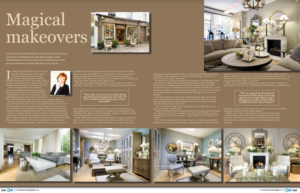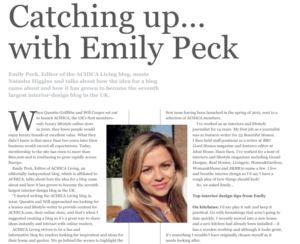The garden squares of London are seen by many as its treasured gems; places to go to relax and get away from the hustle and bustle of life in a large city. Natasha Higgins follows in some famous footsteps and delves into the history of some of these best known squares.
It’s a hot summer’s day in mid-July. Russell Square is positively glowing. Its grass has turned an emerald shade of green, its large plane trees have grown a thousand leaves and its shrubs are in full bloom. Local workers, students and passersby sit eating, chatting and laughing.
Some of London’s most treasured gems are its garden squares. Many of these were developed in the 18th and 19th century and today this busy capital is home to around 600 squares. Come rain, wind or shine, they provide for an oasis of tranquillity in an otherwise busy metropolis.
Key neighbourhoods for notable garden squares include Fitzrovia, Mayfair, Belgravia, Bloomsbury, Marylebone and Islington. The jewel in Fitzrovia’s crown, only a short walk away from Russell Square’s Bloomsbury, is Fitzroy Square: some 100 years ago, one might have bumped into novelist and critic Virginia Woolf, who lived at number 29. Today, a plaque beside the door announces an accountancy firm operate on the premises.
Londons-SquaresIn a city famous for its 306 metre skyscraper, London’s forte lies in contrasting the old with the new. Around 400 of the city’s squares are protected by the London Squares Preservation Act of 1931 which limits the use of London Squares to ‘ornamental pleasure grounds or grounds for play, rest and recreation’.
A short trip from Fitzroy Square westwards lands us in Mayfair, one of the busiest parts of town. Taxis honking, buses bursting at the rim, office workers speed walking and fancy shops and restaurants glistening, give a flavour of the area. On a more relaxed note, so do the green open spaces of St James’s Square and Berkeley Square.
In a word of its own, St James’s Square lies at adjacent to Pall Mall. Around this notable square lived many political figures including Nancy Astor, the first women in Parliament. Influential political institutions such as Chatham House still exist at this address and a faded plaque dedicated to three former Prime Ministers hangs beside its door: “William Pitt, Earl of Chatham, Edward Geoffrey Stanley, Earl of Derby and William Ewart, Gladstone all lived here”.
Slightly further west towards Green Park is world-famous Berkeley Square laid out by architect William Kent in the mid 18th Century. Today, the square is surrounded by many upmarket businesses including Rolls Royce Motor Cars, famous Japanese London restaurant ‘Nobu’ and exclusive private members club, Annabel’s.
London’s very first square was the Covent Garden Piazza, designed by architect Inigo Jones and completed in 1631. The design was heavily influenced by classical Italian architecture and the purpose of the square was to house shops, coffee shops and exclusive residences.
The dominant design of London squares, however, did not follow that of the Covent Garden Piazza. In the late 1660s, the Earl of Southampton laid out a forecourt to his London residence in Bloomsbury. This became known as ‘The Square’ and effectively set the precedent for London’s ‘garden’ squares which were to become the leading style.
Each pocket of London has an almost village-like feel and this is perhaps why the city lends itself so well to its many squares; they offer a communal point for people to come together. One such example is a village north of Mayfair, known as Marylebone which is dotted with private communal squares including Bryanston, Montagu – where John Lennon once lived and Manchester Square, a wonderful 18th century Georgian Garden. Hertford House, which houses the Wallace Collection, is the main attraction around Manchester Square.
Living around a green and well maintained open space which provided a communal garden to its residents, became highly fashionable in the 1800s and remains in vogue today. Not only did this create a tranquil living environment, it also added value to the properties surrounding it.
Further north-east sits Islington; another part of London with village-like characteristics. Lonsdale and Canonbury remain some of the area’s most desirable squares as local estate agents will tell you. Literary figures George Orwell and Evelyn Waugh both lived at Canonbury Square.
As John Ruskin, a leading art critic of the Victorian era once wrote: “A measure of a city’s greatness is to be found in the quality of its public spaces, its parks and squares”, on that note, London surely deserves a high score.


